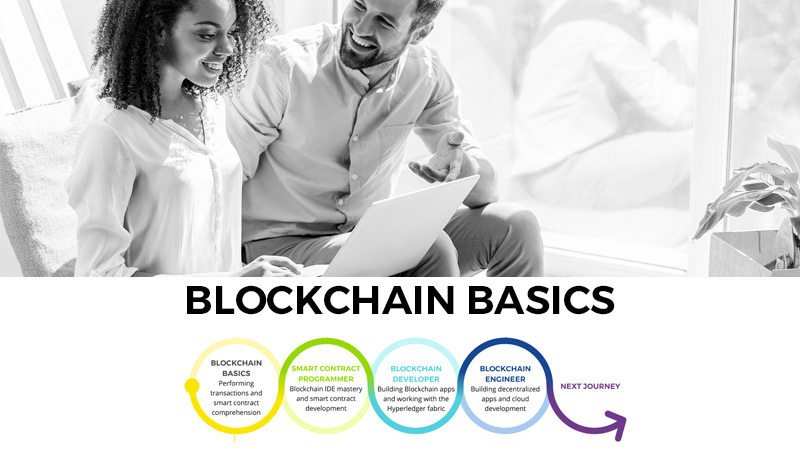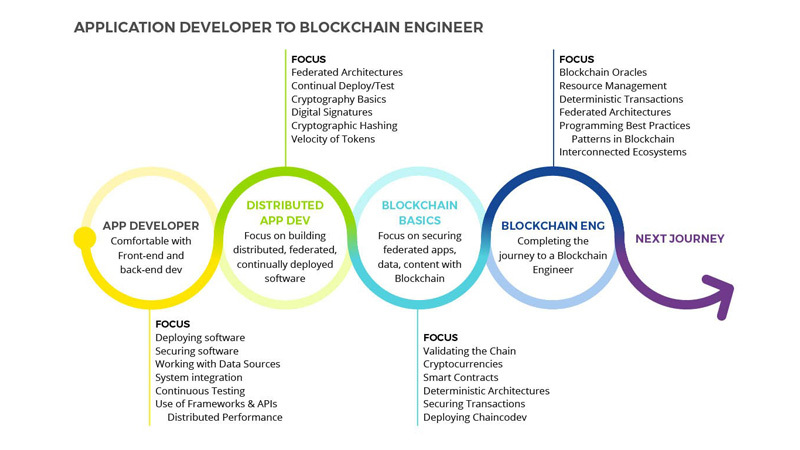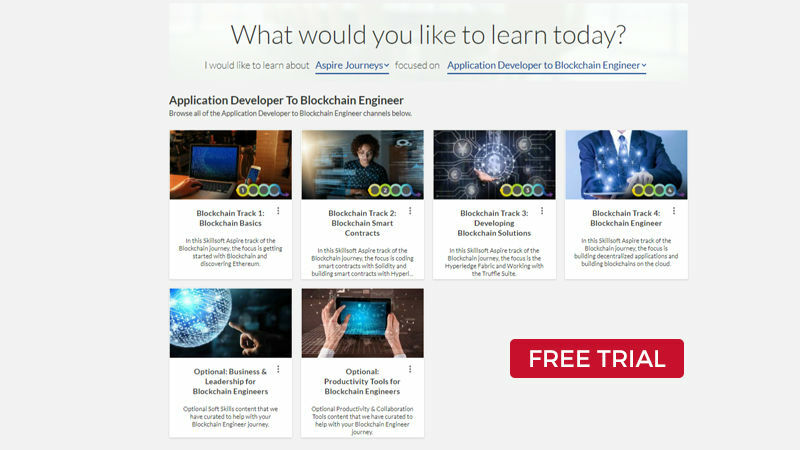6 Reasons to Track Skills Development


Blockchain, a mechanism for storing data in a form that is encrypted and distributed across multiple machines, is the current hot ticket item and is everywhere. The main reason for this popularity is that once you write data to a blockchain, it is impossible to tamper with it. Parties who want to work together, but don’t fully trust each other, can set up a blockchain. Any data they record or verify cannot be altered or manipulated by either party at a later stage. This capability is why blockchain is such a perfect fit for securely logging supply chain transactions, recording votes in an election and for potentially so much more.
To leverage the many benefits and uses of blockchain, organizations are looking to hire people with the requisite blockchain knowledge and expertise. However, finding such talent is not that easy. Blockchain professionals are in high demand. According to a recent LinkedIn report, blockchain developer is the fastest-growing job in the US. So much so, that organizations are struggling to find candidates. As Victor Janulaitis observed, “Many blockchain and ERP positions remain unfilled and some organizations are seeing an increase in attrition rates for those positions." In short, there are not enough blockchain professionals to meet the rising demand. A solution to this talent shortage is to develop more people with the necessary blockchain skills and knowledge.
The Blockchain Basics track is the first track of the Application Developer to Blockchain Engineer Skillsoft Aspire Learning Journey.

The track introduces students to the concept of a blockchain, explains how it records data in a manner that is easy to share and tamper-proof, and also prepares candidates for moving on to the Blockchain Smart Contracts track. In the courses, we also delve deep into Ethereum, one of the most widely used blockchain-based platforms in the market right now.
Currently, we are teaching the following courses in the first track:
Skillsoft designed its Blockchain Basics track for professionals in possession of a background in computer science who want to understand what blockchain is and why it is such a secure place to record information.
Broadly speaking the courses will cover three key areas:
1. Ethereum
Given how hot blockchain technology is, and its wide array of potential applications from cryptocurrencies, digital college degrees to health records, the number of implementations out in the market is enough to confuse anyone. To choose the best blockchain solution for your organization, it is therefore vital to grasp the fundamentals of this technology fully. This includes details such as the consensus algorithms which enable all the nodes participating in a blockchain network to agree on the state of the blockchain. The choice of such an algorithm involves a trade-off between scale and security.
In the Ethereum and Bitcoin networks, the Proof of Work (PoW) is the consensus algorithm in use and is the critical element in the process of mining. If you read news stories discussing how the electricity consumption of the bitcoin network is comparable to that of a small country, understanding the workings of the PoW algorithm will reveal to you exactly why this is the case.
Students will learn that the role of Ethereum is an implementation of a blockchain across a vast network of machines (and thus forms a blockchain network).
2. Computer Science Concepts in Blockchains
There are several concepts of computer science which come together in a blockchain network - from cryptographic hashing to digital signatures to specialized tree data structures on which to record data. How each of these works and where they are applied in blockchain networks are all part of the curriculum.
One feature of blockchains is that these structures are not static, but constantly have new data added to them. There are also several copies of them stored in a network. To secure such a structure most efficiently, it is not enough to simply encrypt the entire blockchain directly. Students are introduced to how the data in a blockchain is structured and at what levels hashing is applied.
Establishing the identities of those who are involved in transactions is also a crucial factor in building a trustworthy system. The course covers the workings of digital signatures and their application in blockchains.
3. Smart Contracts
While there are plenty of use cases for blockchain technology, at the most fundamental level, it is used to record transactions in a secure yet decentralized manner. These transactions can vary from money transfers, real estate sales, votes, to the issuance of college degrees - your imagination only limits the possibilities.
To establish these transactions, you first need to build a smart contract. Smart contracts are digital contracts that use a programming language to determine your operations. What distinguishes smart contracts from old-school, non-digital contracts is that smart contracts can be made self-enforcing. There is no need to include a trusted third-party, such as a regulator or law enforcement agency, for most interactions.
We cover the fundamentals of smart contracts, as well as the language used to define them on the Ethereum network - Solidity.

If you are a Skillsoft Technology & Developer customer, you have access to these three courses as well as the entire Application Developer to Blockchain Engineer Skillsoft Aspire Learning Journey. Otherwise, start a free trial to try them out.
Related blog post: Learn How to Develop Blockchain Smart Contracts
Kishan Iyer is a content engineer at Loonycorn, a technical video content studio. He earned his master’s degree in Computer Science at Columbia University and has worked for various companies such as Deutsche Bank, Electric Cloud and WebMD in the US. He now works at Loonycorn and is also a Skillsoft technology instructor.
Ubaid Rehman Qureshi is a full stack Blockchain developer, also familiar with the Neural Networks, Cloud, Kubernetes and Docker. At Loonycorn, he handled multiple roles as team lead, code reviewer, and engagement manager, while also building innovative DApps and deploying Blockchains networks.
We will email when we make a new post in your interest area.

